Hidden architectural gems of Azerbaijan’s railways Historical excursion with Caliber.Az
The history of Azerbaijan’s railways spans more than a century. Over this time, they have become not only a vital transportation artery for the country but also an integral part of its cultural and architectural landscape. Railway stations, built in different periods, hold a special place in this story. These buildings combine practicality with beauty, becoming symbols of their era. Many of them still impress today with the elegance of their forms, the harmony of their proportions, and the craftsmanship of the architects who created not merely stations, but true architectural landmarks.
The development of railways in Azerbaijan took place in several stages, each leaving a significant mark on the country’s history. A particularly notable period was the Soviet era, when many stations were constructed with attention not only to their functionality but also to their artistic expression. It was during this time that station architecture acquired a distinct character, blending practicality with aesthetic appeal. This article focuses on two stations in the Goygol district. These architectural gems preserve a piece of history and the romance of the railway, connecting the past with the present.
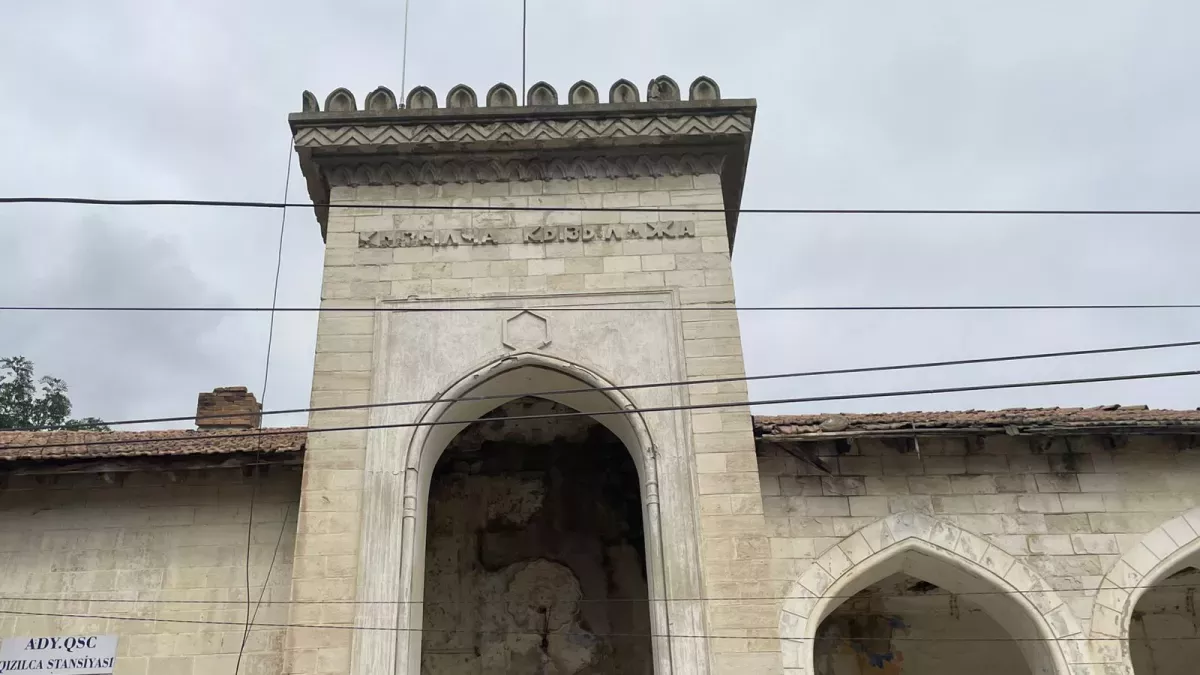
Particular attention deserves the station on the way to Dashkasan — Gizilja Station, built in 1946 by German prisoners of war. It is a striking example of architecture in which Eastern motifs harmoniously merge with the grandeur of Stalinist Empire style. The design of the building was carefully planned with local climatic conditions in mind and features a visually compelling composition: the central part of the façade is emphasised by a projecting upper tier that transitions into arched elements. These arches draw the eye with their elegant verticality and graceful proportions, blending seamlessly with the decorative richness characteristic of the Stalinist Empire.
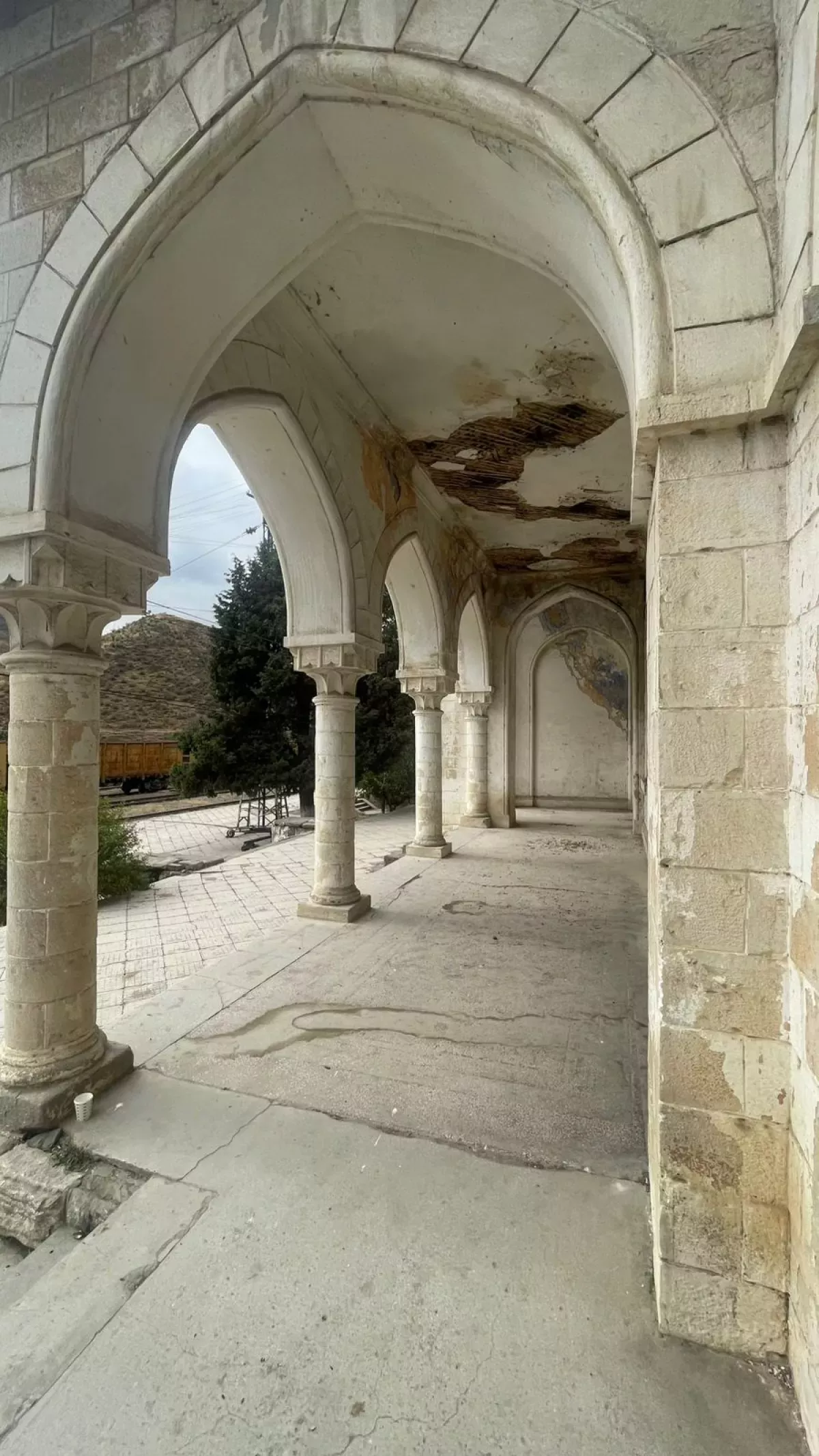
The stonework is particularly impressive: the carefully crafted relief and artistic detailing give the building a monumental and distinguished appearance. In front of the central waiting hall, there is a small open veranda that smoothly connects the exterior with the interior. Service and technical rooms are located on the left side of the building, while the structure itself opens directly onto the platform, emphasising its functional purpose.
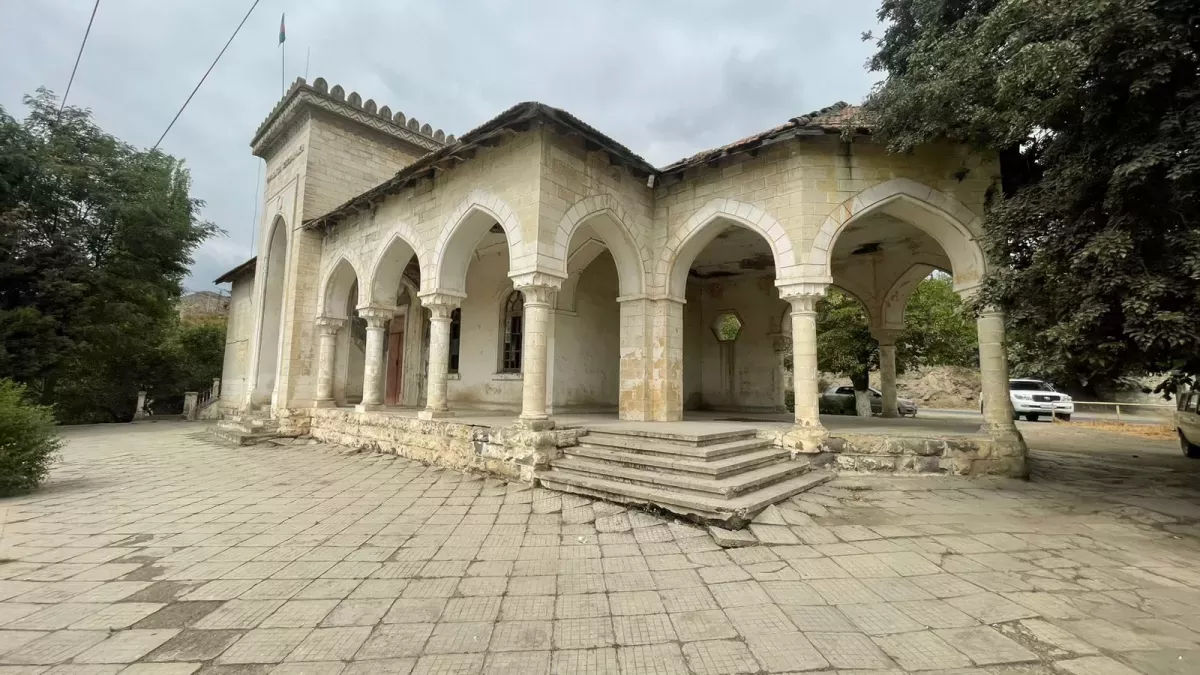
The decorative details also deserve attention: the wooden windows and doors give the building a distinct character and a special artistic expressiveness. Gizilja Station can rightly be considered a unique architectural masterpiece of its era, embodying the finest achievements of the period’s craftsmanship and the ambition to combine practicality with aesthetic beauty.
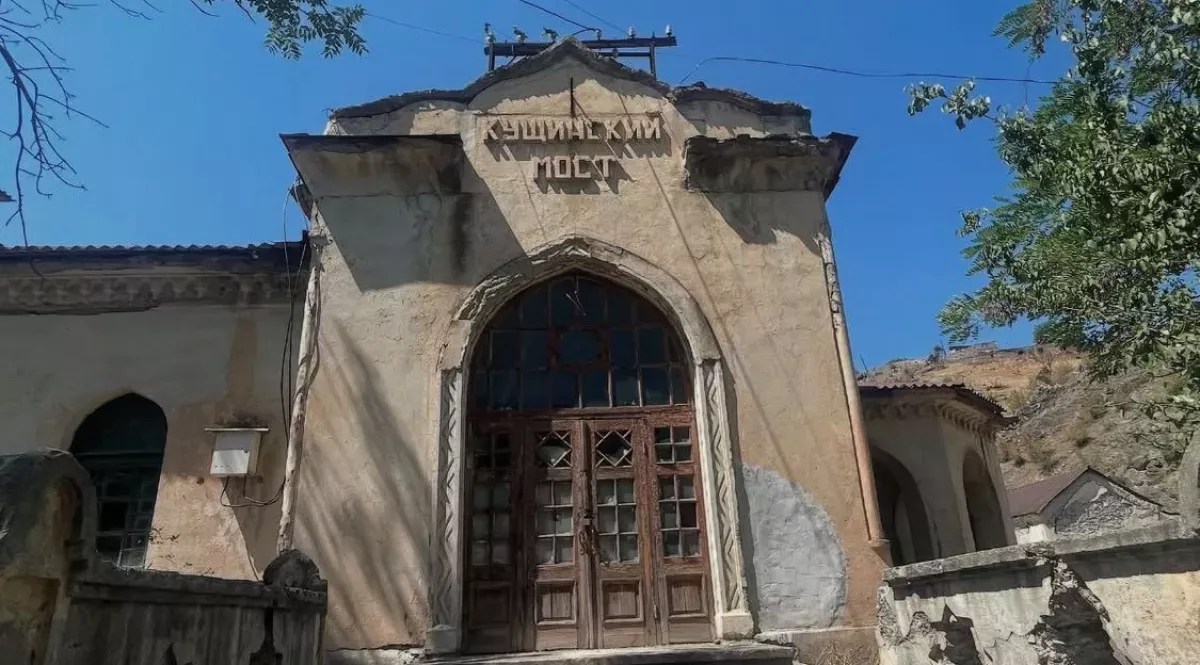
Another notable station in the region is Gushchu Bridge, located near the village of Gushchu. The building impresses with the elegance of its forms and the meticulous attention to detail, while its façade is distinguished by harmony and proportionality. For its time, the station incorporated advanced engineering and architectural solutions, making it not only functional but also artistically expressive.
The station’s composition is built around a combination of different volumes. The central section is single-story, featuring a spacious waiting hall with a covered balcony for passengers attached on the right. This design was dictated by local climatic conditions, ensuring that waiting for the train would be comfortable in any weather. On the left, the complex is complemented by a two-story wing, whose form and style resemble early 20th-century European villas. A neat external staircase leads to it, along with an elegant balcony that adds an architectural accent. This wing housed service rooms, including a doctor’s office, highlighting the station’s importance for both residents and travellers.
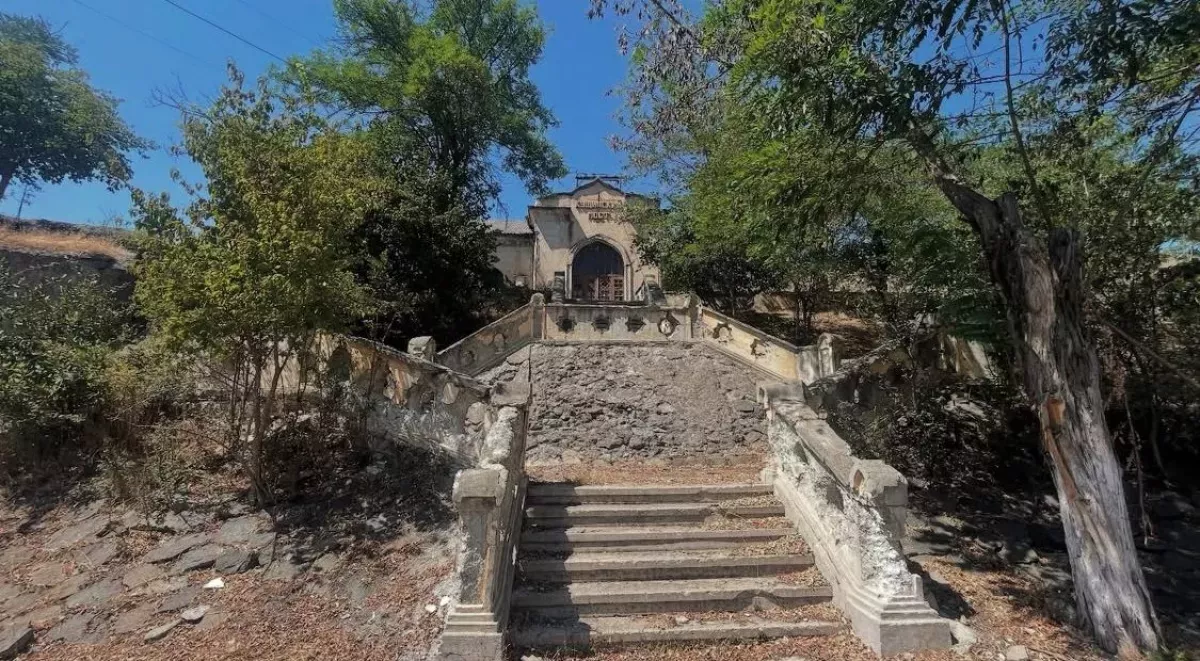
A picturesque, amphitheatre-shaped descent leads from the building to the railway tracks, seamlessly connecting the station’s architecture with the surrounding landscape. The high level of detail, aesthetic taste, and harmony of forms make this structure a striking architectural monument of its time. Even today, though abandoned, Gushchu Bridge Station retains its beauty and style, standing as a living testament to the history of Azerbaijan’s railways.
In the past, these stations were used to transport industrial cargo related to the extraction and development of local mineral resources. They played a vital role as transportation hubs, facilitating the delivery of mined rocks and materials from active quarries, making them a key element of the region’s industrial infrastructure.
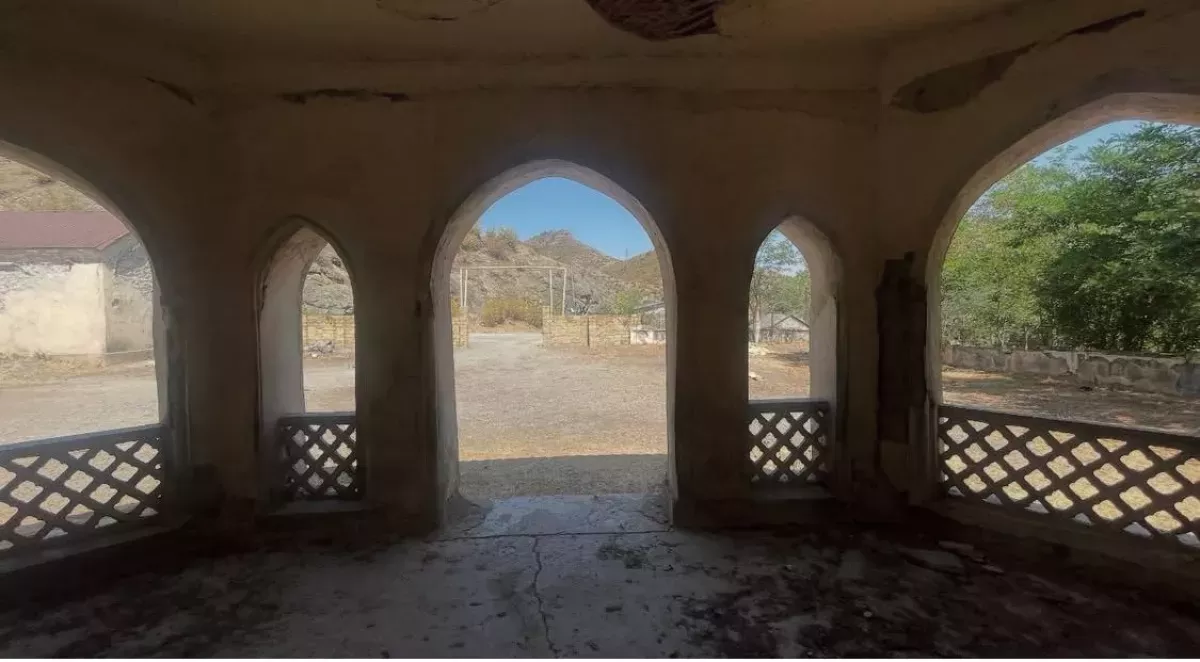
All these stations were likely built under the guidance of an architectural bureau, the name of which, unfortunately, has not survived. Nevertheless, they share a common stylistic approach that gives the ensemble unity and recognizability. Each station expresses this character in its own way, yet together they form a harmonious architectural canvas where functionality is inseparably linked with artistic expression. These structures are not merely transportation hubs but genuine monuments of their era, reflecting the spirit of the time and the skill of their architects.
Unfortunately, these stations have still not been included on the list of protected architectural monuments and are in urgent need of restoration. Without timely intervention, there is a serious risk that these unique cultural heritage sites could be lost in the coming years.
The region’s railway stations stand as a vivid testament to how functional structures can become part of a nation’s architectural heritage. Their appearance still carries the atmosphere of a bygone era, and every detail reflects the talent of the architects and the craftsmanship of the builders, who managed to harmoniously combine practicality with artistic expression. They are a reminder that even utilitarian structures can acquire a soul and become cultural symbols of their time.
By Vahid Shukurov, exclusively for Caliber.Az








